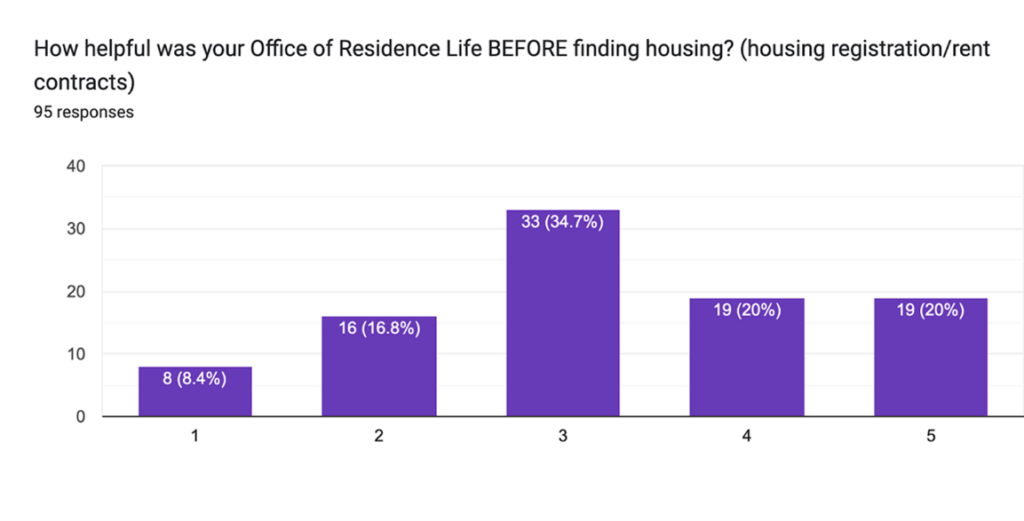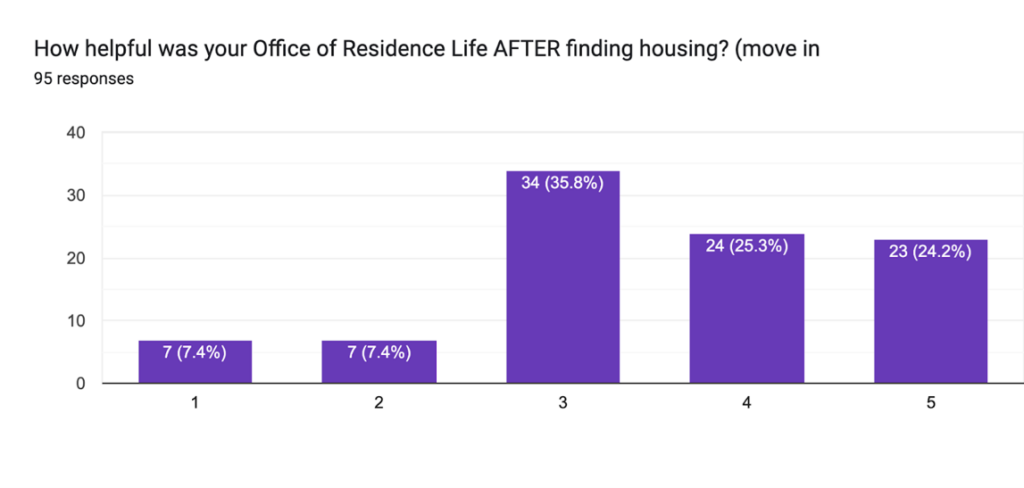‘Be sure to vote in all your local, state, and federal elections, and consider the positions of candidates on housing when you do.’
PROVIDENCE –With increased costs of living and inflation rates as high as 7% in recent years, communities and demographic groups across Rhode Island have been affected by housing costs since the start of the COVID-19 pandemic.
In a state with an abundant history, Rhode Island’s housing crisis has affected the most vulnerable populations and an unexpected group, including young people and individuals who are part of the higher education system.
Ocean State Stories analyzed national, state, and community data to gain an understanding of various points of view pertaining to housing and its reflection on Rhode Island citizens. This included the analysis of university student housing websites, as well as public documents and faculty and staff manuals. A review of national data stemming from a White House initiative, Harvard University’s Joint Center for Housing Studies’ annual report on the current state of the nation’s housing, and additional data from the Shiller US National Price Index also was analyzed.
Dr. Kate Nelischer, who specializes in participatory urban planning and design, urban governance, and the roles of gender in urban planning processes at the University of Southern California, was also a significant resource on the subject of America’s housing crisis.
A survey also was sent to many Rhode Island colleges and universities. Students, faculty, and staff were given the opportunity to express their viewpoints pertaining to housing and their standard of living. The survey also assessed faculty and staff’s opinions about their academic institution’s ability to help with relocation services, on-campus housing, and ensuring their well being and that of their families while teaching at their institution.
The survey ran from the end of May to July 6, 2024. Various schools were invited to participate in the survey, including Salve Regina University, Roger Williams University, Providence College, Brown University, the University of Rhode Island, Rhode Island School of Design, and the U.S. Naval War College in Newport. An additional section was added for individuals who attend and teach at other colleges and community colleges across the state.
Most participants were from Salve Regina University. However, individuals affiliated with some other schools, including Roger Williams, PC, URI, Brown, and the Community College of Rhode Island, contributed their points of view regarding the overall status of housing in the state. In the second rerun of the survey, Bryant University, Johnson & Wales, and the New England Institute of Technology were added in August 2024, but these schools did not respond to Ocean State Stories’ requests to participate.
In the end, a total of 96 students and 12 faculty and staff members contributed to the survey.
Of the students who participated in the survey, 77% noted that they were first-generation college students. Other factors included what year enrolled college students were in, as well as whether they were graduate students or alumni. Alumni had to have graduated from their university within the past two years to be eligible for this survey.
The first-generation question is critical to consider as data from The Bipartisan Policy Center suggests that this demographic of college students is more likely to experience higher rates of homelessness due to loans they must take out to pay for their educations. Though the overall cost of higher education has become a critical factor in the overall discussion of housing affordability, students from low-income families also must be considered. In the U.S., a family that is considered low-income makes less than $30,000 per year.
A California report stemming from the Gender Policy and Equity Institute notes that women and people of color are also at higher risk of interacting directly with the housing crisis as they are usually renting in low-income neighborhoods, which makes them more vulnerable to unsafe housing and lack of affordability of rent and home ownership in the long term.
In addition to analyzing the overall data, such as year of enrollment, what academic institution they attended or attended, and if they were the first individuals in their family to attend an accredited university, the report looked at other variables.
When asked how helpful their university office of residence life was in their general experience in obtaining housing, 34% of students who took the Ocean State Stories survey found their housing office helpful during housing selection and choosing rent contracts. An additional 8% agreed that their university housing services were beneficial throughout this process. On the other hand, 20% disagreed with the statement, stating they had difficulty finding housing. This question was then followed up by two statements in which students were able to rate the efficiency of their Office of Residence Life’s ability to help students find housing, negotiate rent contracts for students living off campus, and their ability to help students during the move-in day and throughout the academic year. The rating system is shown in the figure below. One is very helpful, and five is not helpful at all.

This chart demonstrates the percentage at which students said they were able to seek help from their office of residence life at their designated universities. This included residence life’s ability to help throughout the moving-in process and their ability to communicate with students in dealing with housing complications, including hygiene-related issues within housing units at a university.

These factors are important to consider, as some higher education institutions are located within highly historical residential areas, which can often determine a student’s ability and experience to obtain housing prior to the start of the academic year or upon coming back from study abroad.
Asked to speak about these perspectives, Erin Dalton, a Salve Regina nursing student, said, “The housing times are assigned by a lottery [system], which makes it an agitated and stressful process, especially if you receive a time later than 10 am. Off-campus housing is just as difficult to find because of the prices of rent and space in general. If you have issues with a roommate, housing can be helpful in some cases, but in other cases, you may have no say in who is placed with you or how the situation is handled.”
Other students stated that they had difficult experiences when it came to finding housing, with a few students expressing anger at the lack of communication on the residence office’s end. Some who moved in said they experienced unsanitary living conditions such as mold, rats, and brown water, among other conditions.
When it came to living off campus, most surveyed students said their rent costs were between $500 and $700 a month, with a few stating that their rent costs were upwards of $900 a month, a cost that many students are now unable to afford. While renting costs increased over the median income for the past decades, the pandemic made these levels rise throughout the U.S. Young people who are more likely to be renters and are more vulnerable to the lack of rent protection policies are now on the frontlines of the American housing crisis. This demographic has a much harder time accumulating wealth, which has placed them in a more vulnerable place to find safe and affordable housing.
To put this in a historical perspective, national data demonstrate that the 1990s median home price was twice as much as the median household income. This contrasts with 2024, when the median household price is now six times higher than the median household income. For homeowners and renters alike, median incomes have doubled while the overall cost of housing has tripled since 2000. This demonstrates that many individuals working within Rhode Island’s higher education system fit into the demographic of cost-burdened homeowners.
All students agreed that their Office of Residence Life should actively communicate with students throughout the year to ensure that housing both on and off campus is secured.
Eight percent of faculty and staff agreed that they were able to live in the area where they were teaching and working; 60% of staff respondents strongly agreed with the statement that they chose to live in an area that would best fit the needs of their families, spouses, and themselves. In addition, most of this group answered that their daily commute to work was more than 30 minutes each day.
While this is a small cohort of Rhode Island faculty and staff, national data collected from Harvard University’s Joint Center for Housing Studies suggests that the overall cost of housing has exponentially increased throughout the Northeast. Some of these root causes of the problem have been an increase in property taxes, which has yielded an overall increase in the cost of home ownership. As a result, 19.7 million American homeowners are now cost-burdened and are unable to afford daily necessities.
The State of The Nation Study cites, “Homeowners with incomes under $30,000 had their residual incomes decrease by 18%.” According to a Higher Education Salary Analysis, the average median income for non-union faculty and staff working in private Rhode Island higher education institutions is $125,000 per year. It is important to note that this does not account for the male-to-female equal pay gap in Rhode Island’s higher education system, nor the additional taxes and retirement pensions that are taken out of faculty and staff members’ salaries.
In a statement, Salve Regina University Dean of Students Dean Cameron said: “We encourage any Salve student having difficulty finding housing to reach out directly to our residence life office to discuss [housing] options. Salve put forth a proposal several years ago to build a new residence hall to address the longer-term and wider-reaching housing, and the plans are in the final phase of resolution. Having the new residence available will not only provide more on-campus housing for Salve students but also serve to help make more housing available to the community.”
When narrowing down the data to Rhode Island, a Target 12 WPRI article published in December 2023 notes that homelessness rates have increased by 70% compared to their pre-pandemic levels.
Though this is still a very high rate, some have stated that Rhode Island’s laws that help protect homeless citizens are better than some other states in the country. According to national surveys conducted with Statista in partnership with the U.S. Department of Housing and Urban Development, more than 500,000 Americans are considered homeless in the United States. However, the data does not count the “invisible” homeless population; these individuals are often couch surfing, temporarily living with friends and family, or living in hotels and motels. The states that are most affected by this crisis include California, New York, and Florida.
The University of Southern California’s professor Nelishner said long-term solutions toward closing the homeless gap include funding and building more affordable housing throughout local municipalities and expanding the low-income tax credit, including but not limited to tenant-based rental assistance programs and project-based vouchers. At a macro level, it is incentivizing developers to build affordable housing through inclusionary zoning conditions and implementing rent stabilization and eviction protection through the reduction of entitlement processes or forced evictions: upzoning or the increase in capacity of urban neighborhoods throughout municipalities at the local and state levels.
For example, Brown University’s administration has created a program for its faculty and staff to gain access to housing not far from its Providence campus. Its webpage, Brown Real Estate,provides staff and faculty resources such as website links, addresses, phone numbers, and multiple email addresses that new employees can use throughout their relocation process.
Like many societal systems, access to housing in the United States will always be subject to change and will vary according to the health of national, regional, and local economies. Mortgage rates and rental costs are dependent in part on the government and economists’ decisions.
Asked how these demographics were to make a difference to help curb the rate of the housing crisis and additional advice on how members of Gen Z who are seeking a mortgage in the future, Nelischer told Ocean State Stories that “this is a tough question because I think it will be tough for many current college students to purchase homes in the near future given high home prices and current high interest rates.”
She continued: “I encourage students who are interested in housing to become involved in affordable housing advocacy within their communities. There are many, many excellent community-based organizations working in regions across the U.S. to address housing affordability, and they are putting necessary pressure on elected officials to implement new policies and funding to address the housing crisis. Also, be sure to vote in all your local, state, and federal elections, and consider the positions of candidates on housing when you do.”
Editor’s note: Alix Rousseau is a rising junior at Salve Regina University.






